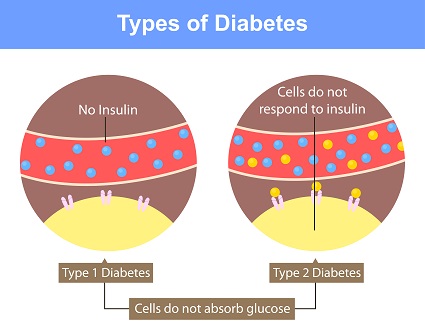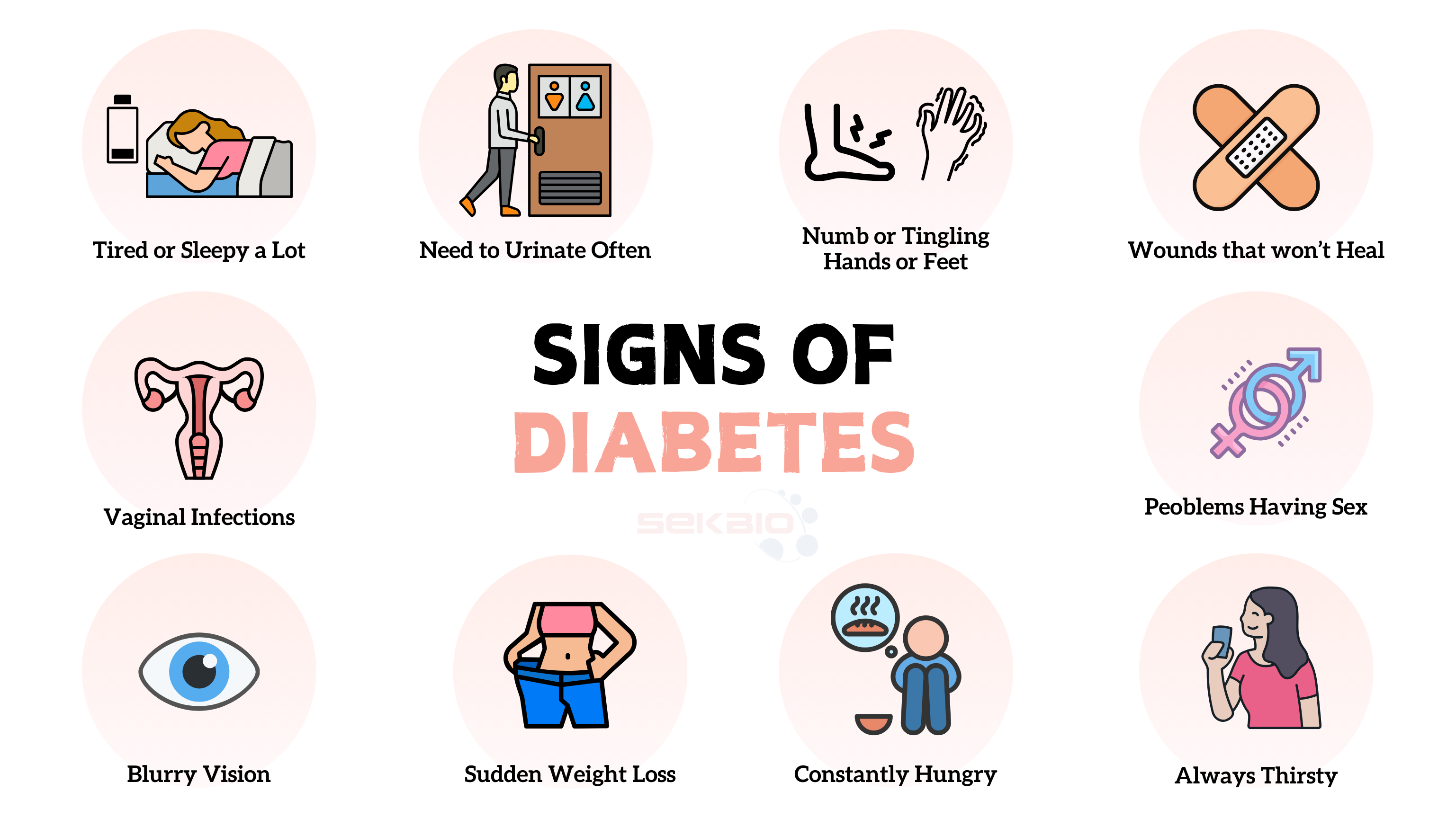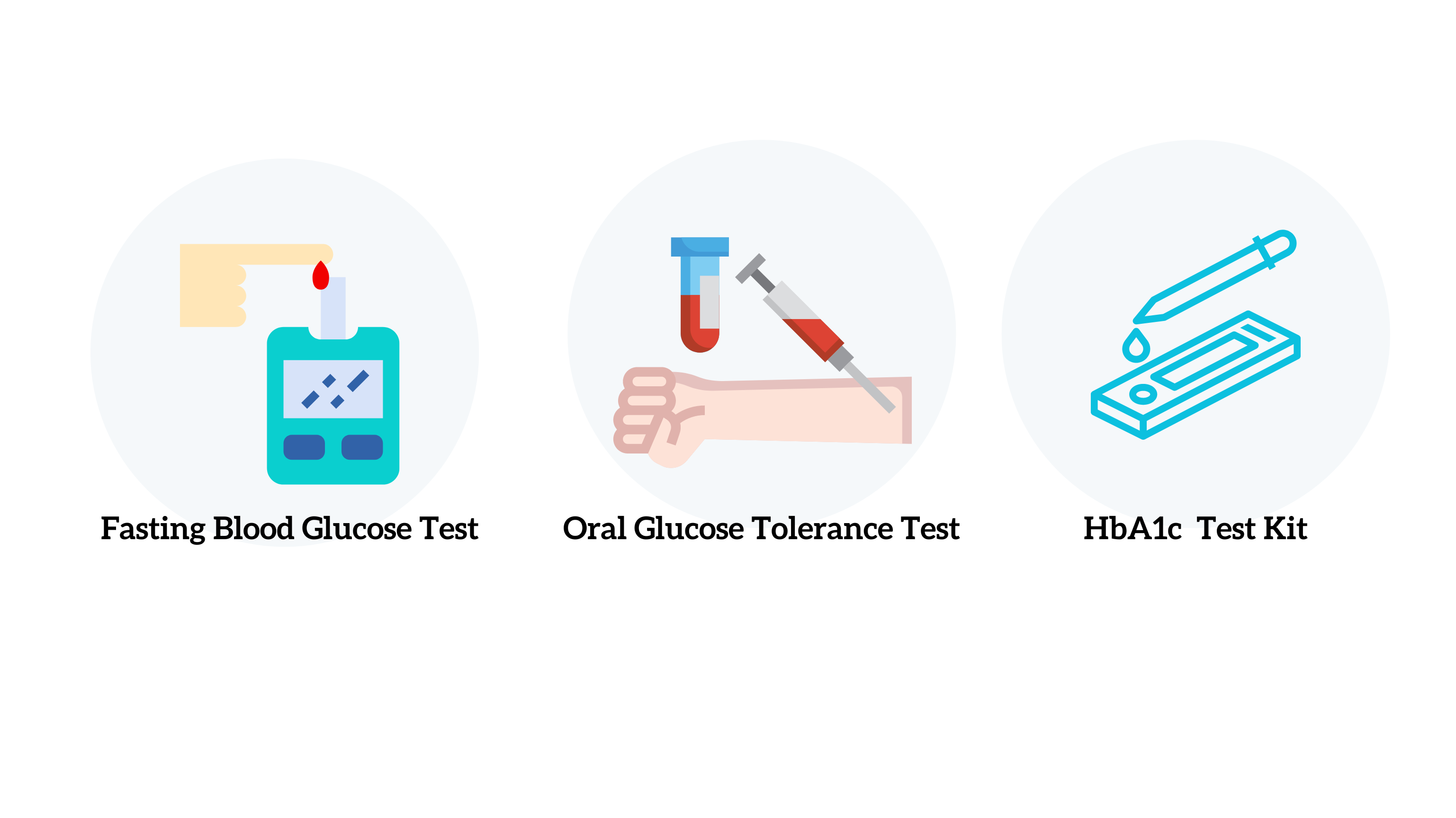Understanding Diabetes: Prevention and Early Detection
With the changes in modern lifestyle, the incidence of diabetes is on the rise. Diabetes is a chronic disease that affects hundreds of millions of people worldwide. It is characterized by elevated blood glucose levels due to insufficient insulin production or improper utilization. There are two main types of diabetes: Type 1 and Type 2.
Type 1 Diabetes
Type 1 diabetes is an autoimmune disease that typically occurs in children and adolescents. The immune system mistakenly attacks and destroys insulin-producing beta cells in the pancreas. Insulin is a crucial hormone that regulates blood glucose levels. Without insulin, blood glucose levels can become dangerously high. People with Type 1 diabetes require lifelong insulin injections to control their blood glucose levels.

Type 2 Diabetes
Type 2 diabetes is more common in adults but is increasingly seen in younger individuals. People with Type 2 diabetes either cannot use insulin effectively (insulin resistance) or do not produce enough insulin to maintain normal blood glucose levels. This type of diabetes is often associated with lifestyle factors such as unhealthy eating, lack of exercise, and obesity.
Symptoms of Diabetes

Common symptoms of diabetes include frequent thirst, increased urination, extreme fatigue, blurred vision, slow healing of wounds, and unexplained weight loss. In the early stages of Type 2 diabetes, symptoms might be subtle or absent, making regular blood glucose checks essential for early detection and intervention.
Complications of Diabetes
Long-term high blood glucose levels can lead to several serious health problems, including:
· Cardiovascular Disease: Increased risk of heart disease and stroke.
· Kidney Disease: Severe cases may require dialysis or kidney transplantation.
· Retinopathy: Can lead to blindness.
· Neuropathy: Peripheral neuropathy causing pain or numbness in the limbs.
· Foot Problems: Infections and ulcers that can lead to amputation.
Preventive Measures for Diabetes
Maintain a Healthy Weight
o Diet Control: Opt for low-fat, low-sugar, and low-salt diets. Increase intake of fruits, vegetables, whole grains, and lean proteins. Avoid high-calorie, sugary foods like desserts, soft drinks, and fast food.
o Regular Exercise: Engage in at least 150 minutes of moderate-intensity aerobic exercise per week, such as brisk walking, swimming, or cycling. Incorporate strength training, such as weight lifting or yoga, to build muscle and improve metabolism.
1.Healthy Eating
o Low-GI Diet: Choose foods with a low glycemic index (GI), such as oats, brown rice, beans, and most vegetables, to help stabilize blood glucose levels.
o Portion Control: Eat reasonable portions at each meal and avoid overeating. Consider eating smaller, more frequent meals (4-5 times a day) to maintain steady blood glucose levels.
o Increase Dietary Fiber: Consume fiber-rich foods such as whole grains, fruits, vegetables, and legumes. Fiber helps slow glucose absorption and keeps blood glucose levels stable.
2.Regular Exercise
o Aerobic Exercise: Engage in at least 150 minutes of moderate-intensity aerobic exercise per week, such as walking, jogging, or swimming. Exercise improves insulin sensitivity and helps control weight.
o Strength Training: Perform strength training exercises, like weight lifting or resistance training, twice a week to enhance muscle strength and boost metabolic health.
o Integrate Activity into Daily Life: Incorporate physical activity into your routine, such as walking to work, using stairs instead of elevators, and increasing daily movement.
3.Regular Check-Ups
o Blood Glucose Monitoring: Regularly monitor blood glucose levels, especially for those with a family history of diabetes or other risk factors.
o Blood Pressure and Lipid Checks: Regularly check blood pressure and lipid levels to prevent cardiovascular diseases.
o Maintain Mental Health: Reduce stress through relaxation, meditation, and adequate sleep. Mental health is closely linked to physical health.
Early Detection of Diabetes

1.Fasting Blood Glucose Test
What It Is: Measures blood glucose levels after at least 8 hours of fasting. Normal values should be below 5.6 mmol/L.
Frequency: It is recommended to have this test annually, especially for individuals over 35 or with a family history of diabetes.
2.Hemoglobin A1c (HbA1c) Test
What It Is: HbA1c, or glycated hemoglobin, is a compound formed when glucose binds to hemoglobin in red blood cells. The HbA1c test measures the average blood glucose levels over the past 2-3 months, making it a reliable indicator of long-term glucose control. A normal HbA1c level is below 5.7%. Hemoglobin is a protein in red blood cells responsible for carrying oxygen. When glucose attaches to hemoglobin, it forms HbA1c, and this binding is irreversible. Therefore, the HbA1c level reflects the average blood glucose concentration over the lifespan of red blood cells.
Frequency:It is recommended to have an HbA1c test at least once a year. For patients with poor blood glucose control, testing every 3-6 months is advisable.
Importance of HbA1c Testing
· Long-term Monitoring: Unlike momentary blood glucose measurements, HbA1c provides a comprehensive view of blood glucose control over several months, offering a more accurate assessment of a patient's overall glycemic control.
· Evaluating Treatment Effectiveness: HbA1c testing allows doctors to evaluate how well a patient's diabetes management plan is working and to make necessary adjustments based on the test results.
· Complication Risk Assessment: High HbA1c levels are closely associated with an increased risk of diabetes-related complications such as cardiovascular diseases, retinopathy, and nephropathy.
Sekbio’s HbA1c Fluorescent Immunoassay Kit
Sekbio’s HbA1c Fluorescent Immunoassay Kit is an efficient and accurate tool designed for both clinical and laboratory use. This product utilizes fluorescent immunoassay technology, offering high sensitivity, strong specificity, and user-friendly operation.
3.Oral Glucose Tolerance Test (OGTT)
What It Is: Measures blood glucose levels before and after consuming a glucose solution to assess glucose metabolism. Two-hour post-glucose values should be below 7.8 mmol/L.
Frequency: Recommended for high-risk individuals (obesity, hypertension, gestational diabetes history) to detect early diabetes or glucose intolerance.
4.Random Blood Glucose Test
What It Is: Measures blood glucose levels at any time, regardless of fasting. Normal values should be below 11.1 mmol/L.
Frequency: Should be performed when symptoms like frequent thirst, increased urination, and fatigue are present.
Conclusion
Prevention and early detection of diabetes are crucial for managing the disease and improving quality of life. By adopting a healthy lifestyle, undergoing regular check-ups, and utilizing early detection methods, individuals can proactively manage their health, prevent the onset of diabetes, and avoid complications. Diabetes management requires ongoing monitoring and a scientifically tailored treatment plan. Sekbio’s HbA1c Fluorescent Immunoassay Kit provides reliable detection tools, helping patients better control their blood glucose, prevent complications, and enjoy a healthier life.

















